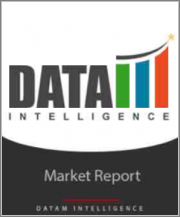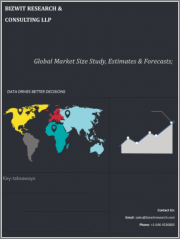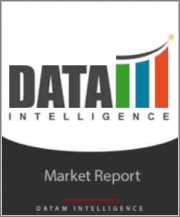
|
시장보고서
상품코드
1319242
세계의 카이로몬 시장(2023-2030년)Global Kairomones Market - 2023-2030 |
||||||
시장 개요
카이로몬 세계 시장은 2022년 6억 2,040만 달러, 2030년에는 14억 5,040만 달러에 달할 것으로 예상됩니다. 예측 기간 2023-2030년 CAGR은 11.2%입니다.
다양한 산업 분야에서 지속가능하고 친환경적인 해충 방제 솔루션에 대한 수요가 증가하고 있습니다. 카이로몬은 종합적 해충관리(IPM) 원칙에 따라 친환경적인 해충관리 접근법을 제공합니다. 지속가능성에 대한 관심이 높아지고 화학농약에 대한 의존도가 낮아지면서 카이로몬에 대한 수요가 증가하고 시장 성장을 견인하고 있습니다.
기술의 발전은 카이로몬의 개발과 응용에 큰 역할을 하고 있습니다. 추출 기술, 제형화 방법 및 조제 시스템의 개선으로 해충 방제에 카이로몬을 사용하는 효과와 편의성이 향상되었습니다. 기술의 추가 발전은 카이로몬 시장의 성장을 지속적으로 촉진 할 수 있습니다.
시장 역학
유기농업의 성장이 카이로몬 시장의 성장을 견인
유기농 인증 프로그램은 승인된 투입물 및 관행의 사용을 포함한 특정 가이드라인을 준수해야 합니다. 카이로몬은 유기농법을 준수하며, 유기농 인증의 지위를 손상시키지 않고 유기농 해충 관리 전략에 사용할 수 있습니다. 카이로몬의 시장 성장의 원동력은 유기농업에서 승인된 투입물로 받아들여져 유기농 인증 요건을 충족하는 농부들을 지원할 수 있다는 점입니다.
유기농법은 합성 농약 사용을 금지하고 있기 때문에 농부들은 대체 해충 관리 전략을 채택해야 합니다. 카이로몬은 해충 방제에 대한 자연적이고 표적화된 접근 방식을 제공하며, 유기농 원칙에 부합합니다. 유기농업이 전 세계적으로 계속 확대됨에 따라 카이로몬과 같은 효과적이고 지속가능한 해충 관리 솔루션에 대한 수요가 증가하여 시장 성장을 주도하고 있습니다.
지속가능한 작물 보호 방법에 대한 수요 증가로 카이로몬 시장 성장 촉진
유엔식량농업기구(FAO)에 따르면 매년 전 세계 농업 생산량의 최대 40%가 해충에 의해 손실되고 있습니다. 카이로몬과 같은 지속가능한 해충 방제 솔루션은 화학 농약에 대한 의존도를 줄이는 데 기여할 수 있습니다. 카이로몬은 해충을 유인 및 기피하거나 짝짓기 행동을 방해하고 다른 해충 방제 방법의 효과를 향상시킬 수 있는 친환경 화학제품입니다. 곤충 해충 관리 전략에 카이로몬을 도입하면 화학 농약의 필요성을 최소화할 수 있으며, 그 결과 화학제품 사용량을 줄이고 환경에도 긍정적인 영향을 미칠 수 있습니다.
통합적 해충관리(IPM)는 다양한 해충 방제 기술을 결합하여 화학농약 사용을 최소화하면서 해충을 효과적으로 관리하는 접근법입니다. 카이로몬은 해충 방제에 대한 자연적이고 표적화된 접근 방식을 제공하기 때문에 IPM 전략에서 중요한 역할을 하고 있으며, 농업, 원예, 임업 등 다양한 산업에서 IPM의 채택이 증가하고 있어 카이로몬에 대한 수요가 증가하고 있습니다.
규제 및 지적재산권 문제가 카이로몬 시장 성장을 저해할 수 있음
기존 해충 방제 방법에 비해 카이로몬의 높은 비용으로 인해, 특히 가격에 민감한 시장에서는 특정 고객이나 산업에서 카이로몬의 접근성이 떨어질 수 있습니다. 특히 더 비용 효율적인 대안이 있는 경우, 이 비용 요소는 잠재적 사용자가 카이로몬을 채택하는 것을 주저하게 만들 수 있습니다.
카이로몬 도입을 고려하는 고객은 잠재적인 투자 대비 효과를 신중하게 평가할 수 있습니다. 카이로몬은 지속가능하고 표적화된 해충 방제를 제공하지만, 초기 비용이 높기 때문에 투자 회수 기간이 길어질 수 있습니다. 따라서 일부 고객은 특히 대체 해충 방제 방법이 단기적으로 더 비용 효율적이라고 판단되는 경우, 투자를 정당화하기 어려울 수 있습니다.
COVID-19 영향 분석
COVID-19 분석에는 코로나 이전 시나리오, 코로나 시나리오, 코로나 이후 시나리오와 함께 가격 역학(코로나 이전 시나리오와 비교한 코로나 이후 가격 변동), 수요와 공급 스펙트럼(거래 제한, 봉쇄 및 후속 문제로 인한 수요와 공급의 변화), 정부의 노력(정부 기관의 시장, 부문 및 산업 활성화 노력), 제조업체의 전략적 노력(제조업체가 COVID 문제를 완화하기 위해 취한 조치) 등이 포함됩니다.
목차
제1장 조사 방법과 조사 범위
제2장 정의와 개요
제3장 주요 요약
제4장 시장 역학
- 영향요인
- 성장 촉진요인
- 종합적 병해충 관리(IPM) 채용 증가
- 지속가능한 작물 보호 방법에 대한 수요 증가
- 성장 억제요인
- 한정된 인식과 이해
- 기회
- 연구개발 진전
- 영향 분석
- 성장 촉진요인
제5장 산업 분석
- Porter's Five Forces 분석
- 공급망 분석
- 가격 분석
- 규제 분석
제6장 COVID-19 분석
제7장 작물 유형별
- 과수원 작물
- 야채
- 밭작물
- 기타
제8장 용도별
- 디스펜서
- 트랩
제9장 지역별
- 북미
- 미국
- 캐나다
- 멕시코
- 유럽
- 독일
- 영국
- 프랑스
- 이탈리아
- 스페인
- 기타 유럽
- 남미
- 브라질
- 아르헨티나
- 기타 남미
- 아시아태평양
- 중국
- 인도
- 일본
- 호주
- 기타 아시아태평양
- 중동 및 아프리카
제10장 경쟁 상황
- 경쟁 시나리오
- 시장 상황/점유율 분석
- M&A분석
제11장 기업 개요
- International Pheromone Systems
- 제품 포트폴리오와 개요
- 재무 개요
- 주요 발전
- Rusell IPM
- Koppert Biological Systems
- SEDQ Healthy Crops
- Pacific Biocontrol Corp
- Novagrica Hellas S.A.
- Bedoukian Research
- Corteva Agriscience
- Suterra
- Trece Inc.
제12장 부록
ksm 23.08.08Market Overview
Global Kairomones Market reached US$ 620.4 million in 2022 and is projected to witness lucrative growth by reaching up to US$ 1,450.4 million by 2030. The market is growing at a CAGR of 11.2% during the forecast period 2023-2030.
There is a growing demand for sustainable and eco-friendly pest control solutions across various industries. Kairomones offer a targeted and environmentally friendly approach to pest management, aligning with the principles of integrated pest management (IPM). The increasing emphasis on sustainability and reduced reliance on chemical pesticides drive the demand for kairomones and boost its market growth.
Technological advancements have played a role in the development and application of kairomones. Improved extraction techniques, formulation methods, and dispensing systems have enhanced the efficacy and convenience of using kairomones for pest control. Further advancements in technology may continue to drive the growth of the kairomones market.
Market Dynamics
Growth in Organic Farming is driving the Kairomones market growth
Organic certification programs require adherence to specific guidelines, including the use of approved inputs and practices. Kairomones are compatible with organic farming practices and can be used in organic pest management strategies without compromising the organic certification status. The market growth of kairomones is driven by their acceptance as an approved input in organic farming and their ability to support farmers in meeting organic certification requirements.
Organic farming practices prohibit the use of synthetic pesticides, making it essential for farmers to adopt alternative pest management strategies. Kairomones offer a natural and targeted approach to pest control, aligning well with the principles of organic farming. As organic farming continues to expand globally, the demand for effective and sustainable pest management solutions like kairomones increases, driving market growth.
Increasing Demand for Sustainable Crop Protection Methods is Driving Kairomones Market Growth
According to the UN Food and Agriculture Organization (FAO), up to 40% of global agricultural production is lost to pests yearly. Sustainable pest control solutions, such as kairomones, contribute to reducing the reliance on chemical pesticides. Kairomones, are emiochemicals that can attract or repel pests, disrupt their mating behaviors, or enhance the effectiveness of other pest control methods. By incorporating kairomones into insect pest management strategies, the need for chemical pesticides is minimized, resulting in reduced chemical usage and potential environmental benefits,
Integrated Pest Management is an approach that combines diverse pest control techniques to effectively manage pests while minimizing the use of chemical pesticides. Kairomones are a vital part of IPM strategies, as they provide a natural and targeted approach to pest control. The adoption of IPM practices is increasing across different industries, such as agriculture, horticulture, and forestry, leading to the growing demand for kairomones.
Regulatory and Intellectual Property Issues can Hamper the Growth of the Kairomones Market
The higher cost of kairomones compared to conventional pest control methods can make them less affordable for certain customers or industries, especially in price-sensitive markets. The cost factor can deter potential users from adopting kairomones, particularly if they have access to more cost-effective alternatives.
Customers evaluating the adoption of kairomones may carefully assess the potential return on investment. While kairomones offer sustainable and targeted pest control, the higher initial cost may require a longer payback period. This can make it challenging for some customers to justify the investment, especially if they perceive alternative pest control methods as more cost-effective in the short term.
COVID-19 Impact Analysis
The COVID-19 Analysis includes Pre-COVID Scenario, COVID Scenario, and Post-COVID Scenario along with Pricing Dynamics (Including pricing change during and post-pandemic comparing it to pre-COVID scenarios), Demand-Supply Spectrum (Shift in demand and supply owing to trading restrictions, lockdown, and subsequent issues), Government Initiatives (Initiatives to revive market, sector or Industry by Government Bodies) and Manufacturers Strategic Initiatives (What manufacturers did to mitigate the COVID issues will be covered here).
Segment Analysis
The global kairomones market is segmented based on crop type, mode of application, and region.
Orchard had the Highest Share in the Kairomones Market
In 2022, based on the crop type, orchard crops held the highest share of the kairomones market. Orchard crops, which include fruit-bearing trees such as apples, citrus fruits, peaches, and pears, are known to face significant pest challenges. Pests like codling moths, oriental fruit moths, and various fruit flies can cause substantial damage to orchard crops, leading to yield losses and reduced crop quality.
According to the MDPI report, in unmanaged orchards, fruit infestation by the codling moth can reach up to 80%, which leads to great damage to crops. As a result, the growing infestation of orchard crops significantly rises the use of kairomone-based products and boosts its market growth.
Geographical Analysis
Strong Agricultural Sector in Europe Regions
In 2022, Europe had a significant share of the kairomones market. According to Euro Sta, The EU's agricultural industry created an average gross value added of EUR 222.3 billion in 2022. Europe is known for its diverse and significant agricultural sector. The region has a significant production of various crops, inclusive of fruits, vegetables, cereals, and ornamentals. The demand for effective pest control solutions in European agriculture has driven the adoption of kairomones as part of incorporated pest control (IPM) techniques.
European countries have been at the vanguard of promoting sustainable agriculture practices. There is a robust focus on reducing the use of chemical pesticides and adopting eco-friendly options. Kairomones align well with the principles of sustainable agriculture, offering targeted and environmentally friendly pest control solutions. The emphasis on sustainability has contributed to the higher demand for kairomones in Europe.
Competitive Landscape
The major global players include: International Pheromone Systems, Rusell IPM, Koppert Biological Systems, SEDQ Healthy Crops, Pacific Biocontrol Corp, Novagrica Hellas S.A., Bedoukian Research, Corteva Agriscience, Suterra, Trece Inc., Certis, Isagro Group
Why Purchase the Report?
- To visualize the global kairomones market segmentation based on crop type, mode of application, and region understand key commercial assets and players.
- Identify commercial opportunities by analyzing trends and co-development.
- Excel data sheet with numerous data points of kairomones market-level with all segments.
- PDF report consists of a comprehensive analysis after exhaustive qualitative interviews and an in-depth study.
- Product mapping available as excel consisting of key products of all the major players.
The Global Kairomones Market Report Would Provide Approximately 53 Tables, 47 Figures, And 102 Pages.
Target Audience 2023
- Manufacturers/ Buyers
- Industry Investors/Investment Bankers
- Research Professionals
- Emerging Companies
Table of Contents
1. Methodology and Scope
- 1.1. Research Methodology
- 1.2. Research Objective and Scope of the Report
2. Definition and Overview
3. Executive Summary
- 3.1. Snippet by Crop Type
- 3.2. Snippet by Mode of Application
- 3.3. Snippet by Region
4. Dynamics
- 4.1. Impacting Factors
- 4.1.1. Drivers
- 4.1.1.1. Rising Adoption of Integrated Pest Management (IPM)
- 4.1.1.2. Increasing Demand for Sustainable Crop Protection Methods
- 4.1.2. Restraints
- 4.1.2.1. Limited Awareness and Understanding
- 4.1.3. Opportunity
- 4.1.3.1. Advancements in Research and Development
- 4.1.4. Impact Analysis
- 4.1.1. Drivers
5. Industry Analysis
- 5.1. Porter's Five Force Analysis
- 5.2. Supply Chain Analysis
- 5.3. Pricing Analysis
- 5.4. Regulatory Analysis
6. COVID-19 Analysis
- 6.1. Analysis of COVID-19
- 6.1.1. Scenario Before COVID
- 6.1.2. Scenario During COVID
- 6.1.3. Scenario Post COVID
- 6.2. Pricing Dynamics Amid COVID-19
- 6.3. Demand-Supply Spectrum
- 6.4. Government Initiatives Related to the Market During Pandemic
- 6.5. Manufacturers Strategic Initiatives
- 6.6. Conclusion
7. By Crop Type
- 7.1. Introduction
- 7.1.1. Market Size Analysis and Y-o-Y Growth Analysis (%), By Crop Type
- 7.1.2. Market Attractiveness Index, By Crop Type
- 7.2. Orchard Crops*
- 7.2.1. Introduction
- 7.2.2. Market Size Analysis and Y-o-Y Growth Analysis (%)
- 7.3. Vegetables
- 7.4. Field Crops
- 7.5. Others
8. By Mode of Application
- 8.1. Introduction
- 8.1.1. Market Size Analysis and Y-o-Y Growth Analysis (%), By Mode of Application
- 8.1.2. Market Attractiveness Index, By Mode of Application
- 8.2. Dispensers*
- 8.2.1. Introduction
- 8.2.2. Market Size Analysis and Y-o-Y Growth Analysis (%)
- 8.3. Traps
9. By Region
- 9.1. Introduction
- 9.1.1. Market Size Analysis and Y-o-Y Growth Analysis (%), By Region
- 9.1.2. Market Attractiveness Index, By Region
- 9.2. North America
- 9.2.1. Introduction
- 9.2.2. Key Region-Specific Dynamics
- 9.2.3. Market Size Analysis and Y-o-Y Growth Analysis (%), By Crop Type
- 9.2.4. Market Size Analysis and Y-o-Y Growth Analysis (%), By Mode of Application
- 9.2.5. Market Size Analysis and Y-o-Y Growth Analysis (%), By Country
- 9.2.5.1. U.S.
- 9.2.5.2. Canada
- 9.2.5.3. Mexico
- 9.3. Europe
- 9.3.1. Introduction
- 9.3.2. Key Region-Specific Dynamics
- 9.3.3. Market Size Analysis and Y-o-Y Growth Analysis (%), By Crop Type
- 9.3.4. Market Size Analysis and Y-o-Y Growth Analysis (%), By Mode of Application
- 9.3.5. Market Size Analysis and Y-o-Y Growth Analysis (%), By Country
- 9.3.5.1. Germany
- 9.3.5.2. UK
- 9.3.5.3. France
- 9.3.5.4. Italy
- 9.3.5.5. Spain
- 9.3.5.6. Rest of Europe
- 9.4. South America
- 9.4.1. Introduction
- 9.4.2. Key Region-Specific Dynamics
- 9.4.3. Market Size Analysis and Y-o-Y Growth Analysis (%), By Crop Type
- 9.4.4. Market Size Analysis and Y-o-Y Growth Analysis (%), By Mode of Application
- 9.4.5. Market Size Analysis and Y-o-Y Growth Analysis (%), By Country
- 9.4.5.1. Brazil
- 9.4.5.2. Argentina
- 9.4.5.3. Rest of South America
- 9.5. Asia-Pacific
- 9.5.1. Introduction
- 9.5.2. Key Region-Specific Dynamics
- 9.5.3. Market Size Analysis and Y-o-Y Growth Analysis (%), By Crop Type
- 9.5.4. Market Size Analysis and Y-o-Y Growth Analysis (%), By Mode of Application
- 9.5.5. Market Size Analysis and Y-o-Y Growth Analysis (%), By Country
- 9.5.5.1. China
- 9.5.5.2. India
- 9.5.5.3. Japan
- 9.5.5.4. Australia
- 9.5.5.5. Rest of Asia-Pacific
- 9.6. Middle East and Africa
- 9.6.1. Introduction
- 9.6.2. Key Region-Specific Dynamics
- 9.6.3. Market Size Analysis and Y-o-Y Growth Analysis (%), By Crop Type
- 9.6.4. Market Size Analysis and Y-o-Y Growth Analysis (%), By Mode of Application
10. Competitive Landscape
- 10.1. Competitive Scenario
- 10.2. Market Positioning/Share Analysis
- 10.3. Mergers and Acquisitions Analysis
11. Company Profiles
- 11.1. International Pheromone Systems*
- 11.1.1. Product Portfolio and Description
- 11.1.2. Financial Overview
- 11.1.3. Key Developments
- 11.2. Rusell IPM
- 11.3. Koppert Biological Systems
- 11.4. SEDQ Healthy Crops
- 11.5. Pacific Biocontrol Corp
- 11.6. Novagrica Hellas S.A.
- 11.7. Bedoukian Research
- 11.8. Corteva Agriscience
- 11.9. Suterra
- 11.10. Trece Inc.
LIST NOT EXHAUSTIVE
12. Appendix
- 12.1. About Us and Services
- 12.2. Contact Us



















